($41, Kermit Lynch Wine Merchant): 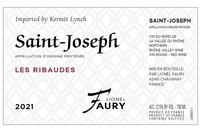 St. Joseph, an important but sometimes overlooked appellation in the Northern Rhône, is exceptionally long, running on the west bank of that river from Cornas in the south to Condrieu in the north. Its soils and exposures are varied, given its length, unlike its more circumscribed neighbors, Cornas, Hermitage, and Côte Rôtie, so it’s hard to generalize about the wines. … Read more
St. Joseph, an important but sometimes overlooked appellation in the Northern Rhône, is exceptionally long, running on the west bank of that river from Cornas in the south to Condrieu in the north. Its soils and exposures are varied, given its length, unlike its more circumscribed neighbors, Cornas, Hermitage, and Côte Rôtie, so it’s hard to generalize about the wines. … Read more
Category Archives: WRO Reviews
Rotem and Mounir Saouma, Châteauneuf-du-Pape (Rhône Valley, France) “Arioso” 2020
($175, Vintus): 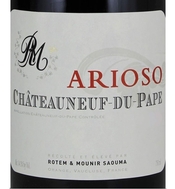 With Arioso, and indeed all of Rotem and Mounir Saouma’s Rhône wines, the finesse and weightlessness of Burgundy meets the muscle of the Rhône. In Burgundy, the husband-and-wife team is a mini-négociant, buying small amounts of grapes or newly pressed wine from growers—typically just a few barrels—raising it, and bottling it under the Lucien Le Moine label. … Read more
With Arioso, and indeed all of Rotem and Mounir Saouma’s Rhône wines, the finesse and weightlessness of Burgundy meets the muscle of the Rhône. In Burgundy, the husband-and-wife team is a mini-négociant, buying small amounts of grapes or newly pressed wine from growers—typically just a few barrels—raising it, and bottling it under the Lucien Le Moine label. … Read more
Silver Oak, Alexander Valley (Sonoma County, California) Cabernet Sauvignon 2020
 ($100):
($100): 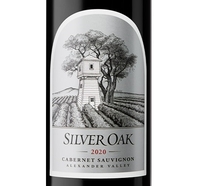 Plush and sexy, Silver Oak’s dazzling 2020 Alexander Valley Cabernet Sauvignon delivers succulent dark fruit offset by black olive-like nuances. Polished and suave tannins provide support without being intrusive or distracting, allowing for immediate enjoyment with a steak. Good acidity keeps it bright and you coming back for another sip.… Read more
Plush and sexy, Silver Oak’s dazzling 2020 Alexander Valley Cabernet Sauvignon delivers succulent dark fruit offset by black olive-like nuances. Polished and suave tannins provide support without being intrusive or distracting, allowing for immediate enjoyment with a steak. Good acidity keeps it bright and you coming back for another sip.… Read more
Nicolas-Jay Estate, Willamette Valley (Oregon) Pinot Noir “L’Ensemble” 2022
($75): 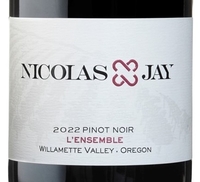 Nicolas-Jay, a collaboration between Jean-Nicolas Méo, who runs the celebrated Domaine Méo-Camuzet, one of Burgundy’s top producers, and Jay Boberg, a music industry giant, is just a decade old and is already one of Oregon’s leading producers. Only the second vintage vinified in their own winery, their 2022s all have a captivating purity and elegance. … Read more
Nicolas-Jay, a collaboration between Jean-Nicolas Méo, who runs the celebrated Domaine Méo-Camuzet, one of Burgundy’s top producers, and Jay Boberg, a music industry giant, is just a decade old and is already one of Oregon’s leading producers. Only the second vintage vinified in their own winery, their 2022s all have a captivating purity and elegance. … Read more
Nicolas-Jay Estate, Willamette Valley (Oregon) Pinot Noir “Own-Rooted” 2022
($95): 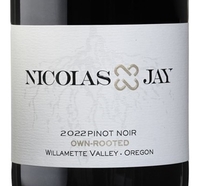 The Own-Rooted bottling comprises grapes from sites in the Willamette, all of which contain vines more than 30 years old, including some grapes from their own Bishops Creek Vineyard. Grapes from Hyland Vineyard in the McMinnville AVA and from Nysa Vineyard in the Dundee Hills round out the blend. … Read more
The Own-Rooted bottling comprises grapes from sites in the Willamette, all of which contain vines more than 30 years old, including some grapes from their own Bishops Creek Vineyard. Grapes from Hyland Vineyard in the McMinnville AVA and from Nysa Vineyard in the Dundee Hills round out the blend. … Read more
Nicolas-Jay Estate, Dundee Hills (Willamette Valley, Oregon) Pinot Noir Nysa Vineyard 2022
($95): 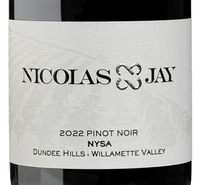 It is not surprising that Nicolas-Jay focuses on single vineyard bottlings, like this one from the acclaimed Nysa Vineyard, given the Burgundian perspective Jean-Nicolas Méo brings to the project. The iron-tinged 2022 Nysa leads with gorgeous aromatics of dark fruit and minerals. … Read more
It is not surprising that Nicolas-Jay focuses on single vineyard bottlings, like this one from the acclaimed Nysa Vineyard, given the Burgundian perspective Jean-Nicolas Méo brings to the project. The iron-tinged 2022 Nysa leads with gorgeous aromatics of dark fruit and minerals. … Read more
Rocche Costamagna, Barolo Riserva (Piedmont, Italy) Rocche Dell’Annunziata “Bricco Francesco” 2016
($96): 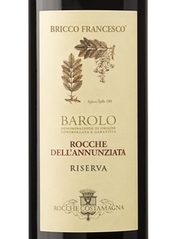 Costamagna’s majestic Riserva, Bricco Francesco, comes from the higher part of Rocche Dell’Annunziata, which most producers believe has better soil and exposure. At eight years of age, its bricky color suggests maturity, but don’t be fooled. At this stage, engaging floral notes are apparent, followed by mineraly and red fruit nuances. … Read more
Costamagna’s majestic Riserva, Bricco Francesco, comes from the higher part of Rocche Dell’Annunziata, which most producers believe has better soil and exposure. At eight years of age, its bricky color suggests maturity, but don’t be fooled. At this stage, engaging floral notes are apparent, followed by mineraly and red fruit nuances. … Read more
Rocche Costamagna, Barolo (Piedmont, Italy) Rocche Dell’Annunziata 2020
($60): 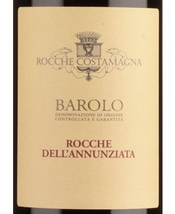 Ian D’Agata, an Italian wine authority who has forgotten more about Italian wines than I know, says in Barolo: Terroir, Grapes, Crus, People, Places (2022), “I think Rocche Dell’Annunziata is one of Barolo’s best vineyard areas, a true Grand Cru if there ever was one.” … Read more
Ian D’Agata, an Italian wine authority who has forgotten more about Italian wines than I know, says in Barolo: Terroir, Grapes, Crus, People, Places (2022), “I think Rocche Dell’Annunziata is one of Barolo’s best vineyard areas, a true Grand Cru if there ever was one.” … Read more
Ayala, Champagne (France) “A/18” Blanc de Blancs Extra-Brut 2018
($130, Vintus): 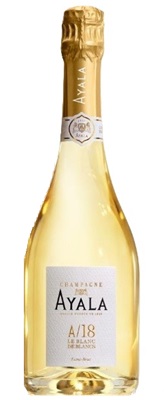 Curiously, the Ayala Champagne house, founded by a Columbian, Edmond de Ayala, is located in the town of Aÿ. Paradoxically, Aÿ, a town in the Vallée de la Marne, is known for great Pinot Noir, while Ayala’s focus is on Chardonnay. … Read more
Curiously, the Ayala Champagne house, founded by a Columbian, Edmond de Ayala, is located in the town of Aÿ. Paradoxically, Aÿ, a town in the Vallée de la Marne, is known for great Pinot Noir, while Ayala’s focus is on Chardonnay. … Read more
Conde Valdemar, Rioja Reserva (Spain) 2015
($30, Cru Selections):  Regulations for the Reserva category of Rioja require at least 3 years of aging, one of which must be in barrel, before release. Many, like this beauty, are aged longer before they hit retailers’ shelves. Hint of brown mahogany in the color announces it maturity and the non-fruit panoply of flavors (coffee and even leather-like notes) on the palate confirms it. … Read more
Regulations for the Reserva category of Rioja require at least 3 years of aging, one of which must be in barrel, before release. Many, like this beauty, are aged longer before they hit retailers’ shelves. Hint of brown mahogany in the color announces it maturity and the non-fruit panoply of flavors (coffee and even leather-like notes) on the palate confirms it. … Read more
Ornellaia, Toscana Rosso IGT (Tuscany, Italy) “Le Volte dell’Ornellaia” 2022
($30, Vintus): 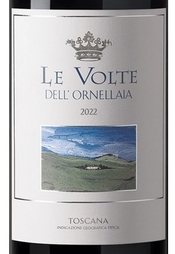 Ornellaia is one of Italy’s iconic and greatest wines. They produce a second wine, Le Serre Nuove dell’Ornellaia, that is made from young vines or from grapes that just don’t make the cut to be used for Ornellaia itself. … Read more
Ornellaia is one of Italy’s iconic and greatest wines. They produce a second wine, Le Serre Nuove dell’Ornellaia, that is made from young vines or from grapes that just don’t make the cut to be used for Ornellaia itself. … Read more
Tenuta La Massa, Toscana Rosso IGT (Tuscany, Italy) “Giorgio Primo” 2020
($110): 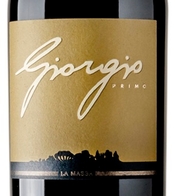 With Giorgio Primo, Giampaolo Motta, the owner of La Massa, shows that Bordeaux varieties do well in Tuscany outside of Bolgheri. The sumptuous blend of Cabernet Sauvignon, Merlot and Petit Verdot, grown at their estate in Panzano in the heart of Chianti Classico, consistently thrills. … Read more
With Giorgio Primo, Giampaolo Motta, the owner of La Massa, shows that Bordeaux varieties do well in Tuscany outside of Bolgheri. The sumptuous blend of Cabernet Sauvignon, Merlot and Petit Verdot, grown at their estate in Panzano in the heart of Chianti Classico, consistently thrills. … Read more
DiamAndes, Valle de Uco (Mendoza, Argentina) Malbec – Syrah “Perlita” 2020
($14): 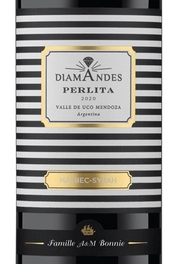 The A & M Bonnie family has expanded from their homebase at Château Malartic Lagravière, a leading estate in Bordeaux’s Pessac-Léognan appellation, to Argentina. Although Malbec was once one of the important varieties used in Bordeaux, it is rarely seen there currently. … Read more
The A & M Bonnie family has expanded from their homebase at Château Malartic Lagravière, a leading estate in Bordeaux’s Pessac-Léognan appellation, to Argentina. Although Malbec was once one of the important varieties used in Bordeaux, it is rarely seen there currently. … Read more
Dr. Konstantin Frank, Finger Lakes (New York) Riesling 2023
($18): 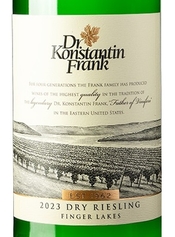 Not only does Dr. Konstantin Frank rank with the top Finger Lake producers, but also with the world’s top Riesling producers. Their 2023 shows why. Minerally and expansive, this dry Riesling is a delight to drink. It delivers good weight and substance without being in your face. … Read more
Not only does Dr. Konstantin Frank rank with the top Finger Lake producers, but also with the world’s top Riesling producers. Their 2023 shows why. Minerally and expansive, this dry Riesling is a delight to drink. It delivers good weight and substance without being in your face. … Read more
El Coto, Rioja Crianza (Spain) 2019
($13, Opici Wines & Spirits): 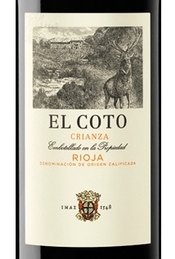 Like so many wines from Rioja, the juicy 2019 Crianza from El Coto, delivers more than the price suggests. As a reminder, a Rioja labeled Crianza, by law, has been aged for a year in barrel and a year in bottle before release. … Read more
Like so many wines from Rioja, the juicy 2019 Crianza from El Coto, delivers more than the price suggests. As a reminder, a Rioja labeled Crianza, by law, has been aged for a year in barrel and a year in bottle before release. … Read more
Domaine Mont Bessay, Juliénas (Beaujolais, France) En Bessay 2022
($60, Misa Imports): 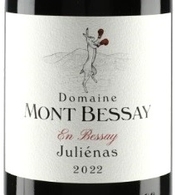 The team of Philippe Pascal and Guillaume Marko have set the standard for Givry with their graceful wines from Domaine du Celliers aux Moines by focusing on specific parcels within the vineyard, matching the viticulture and the winemaking to the parcel, what the French call sélection parcellaire. … Read more
The team of Philippe Pascal and Guillaume Marko have set the standard for Givry with their graceful wines from Domaine du Celliers aux Moines by focusing on specific parcels within the vineyard, matching the viticulture and the winemaking to the parcel, what the French call sélection parcellaire. … Read more
Domaine Mont Bessay, Juliénas (Beaujolais, France) Quatre Cerisiers 2022
($60, Misa Imports): 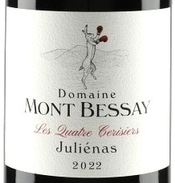 Mont Bessay’s Quatre Cerisiers bottling comes from a small, 1.75-acre, plot some distance from the winery where the soil contains blue stone. Pascal and Marko marvel at how different Gamay behaves here compared to the parcels around the winery. … Read more
Mont Bessay’s Quatre Cerisiers bottling comes from a small, 1.75-acre, plot some distance from the winery where the soil contains blue stone. Pascal and Marko marvel at how different Gamay behaves here compared to the parcels around the winery. … Read more
Trapiche, Valle de Uco (Mendoza, Argentina) Malbec Finca Coletto “Terroir Series” 2018
($52, WX Brands): 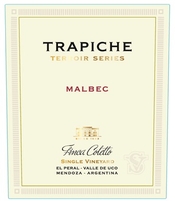 Trapiche has the luxury of selecting from over 200 different vineyards to produce their single vineyard wines. In 2018 the Malbec came from Finca Coletto, a high-altitude vineyard that plenty of sunlight to achieve ripeness and coolness that should preserve acidity. … Read more
Trapiche has the luxury of selecting from over 200 different vineyards to produce their single vineyard wines. In 2018 the Malbec came from Finca Coletto, a high-altitude vineyard that plenty of sunlight to achieve ripeness and coolness that should preserve acidity. … Read more
Trapiche, Valle de Uco (Mendoza, Argentina) Cabernet Sauvignon Finca Laborde “Terroir Series” 2017
($46, WX Brands): 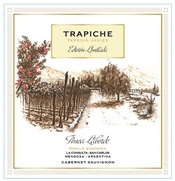 What’s fascinating to me is how much more interesting Trapiche’s single vineyard Cabernet Sauvignon is compared to their Malbec. Yes, the same heavy bottle announces a big wine, but in this case a lovely fragrance pulls you in. … Read more
What’s fascinating to me is how much more interesting Trapiche’s single vineyard Cabernet Sauvignon is compared to their Malbec. Yes, the same heavy bottle announces a big wine, but in this case a lovely fragrance pulls you in. … Read more
Dr. Konstantin Frank, Finger Lakes (New York) Grüner Veltliner 2023
($15): 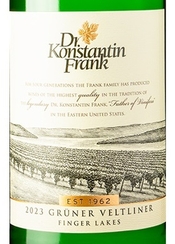 I have long felt that the Finger Lakes of northern New York makes this country’s best dry Riesling. What I didn’t realize is how well they do with Grüner Veltliner, Austria’s signature grape. It should come as no surprise since Grüner, as it’s known, requires similar growing conditions to Riesling. … Read more
I have long felt that the Finger Lakes of northern New York makes this country’s best dry Riesling. What I didn’t realize is how well they do with Grüner Veltliner, Austria’s signature grape. It should come as no surprise since Grüner, as it’s known, requires similar growing conditions to Riesling. … Read more
Mar de Frades, Rías Baixas (Galicia, Spain) Albariño 2022
($23, Zamora Company): 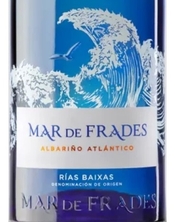 Albariño and Rías Baixas are practically synonymous. Yes, there is a little other white wine produced aside from Albariño, and of course, in neighboring Portugal, the same grape (Alvarinho in Portuguese) is used for Vinho Verde. But Albariño from Rías Baixas is hard to resist, especially in the summer because its uplifting citrus acidity refreshes and simultaneously cuts through most anything on the table, even barbecued chicken. … Read more
Albariño and Rías Baixas are practically synonymous. Yes, there is a little other white wine produced aside from Albariño, and of course, in neighboring Portugal, the same grape (Alvarinho in Portuguese) is used for Vinho Verde. But Albariño from Rías Baixas is hard to resist, especially in the summer because its uplifting citrus acidity refreshes and simultaneously cuts through most anything on the table, even barbecued chicken. … Read more
Ramón Bilbao, Rueda (Castilla y León, Spain) Verdejo 2022
($18, Zamora Company): 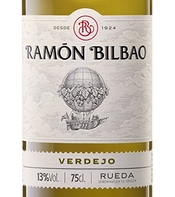 Founded in Rioja over a hundred years ago and focused on wines from there, Ramón Bilbao expanded to Rueda and built a winey there in 2016. The talents they exhibit in their Rioja are readily apparent in this floral and fresh Rueda. … Read more
Founded in Rioja over a hundred years ago and focused on wines from there, Ramón Bilbao expanded to Rueda and built a winey there in 2016. The talents they exhibit in their Rioja are readily apparent in this floral and fresh Rueda. … Read more
Attems, Collio DOC (Friuli-Venezia Giulia, Italy) Sauvignon Blanc “Cicinis” 2020
($34, Vintus): 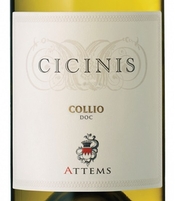 What a difference between varietal Sauvignon Blanc and the taste that grape imparts to the wine depending on where it is planted. Here in Collio, Attems Sauvignon Blanc speaks far more strongly to the place rather than the grape. … Read more
What a difference between varietal Sauvignon Blanc and the taste that grape imparts to the wine depending on where it is planted. Here in Collio, Attems Sauvignon Blanc speaks far more strongly to the place rather than the grape. … Read more
DiamAndes, Valle de Uco (Mendoza, Argentina) Chardonnay “Perlita” 2022
($15): 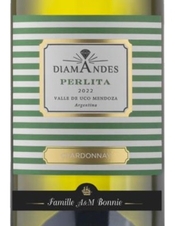 Oh no, another South American Chardonnay. Well, it turns out that DiamAndes’ is not just another South American Chardonnay. The backstory is as fascinating as the wine is stunning. DiamAndes is a project of the A & M Bonnie family, owners of Château Malartic Lagravière, one of the leading estates in Pessac-Léognan. … Read more
Oh no, another South American Chardonnay. Well, it turns out that DiamAndes’ is not just another South American Chardonnay. The backstory is as fascinating as the wine is stunning. DiamAndes is a project of the A & M Bonnie family, owners of Château Malartic Lagravière, one of the leading estates in Pessac-Léognan. … Read more
Trothe, Horse Heaven Hills (Washington) Grenache “Limited” 2021
($162): 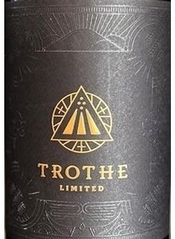 Trothe wines come exclusively from Andrews Family Vineyards, which the family has farmed for generations, in the Horse Heaven Hills AVA of Washington State. Although only available through their website, the public should be aware of these bold wines because they have a measure of elegance despite their size. … Read more
Trothe wines come exclusively from Andrews Family Vineyards, which the family has farmed for generations, in the Horse Heaven Hills AVA of Washington State. Although only available through their website, the public should be aware of these bold wines because they have a measure of elegance despite their size. … Read more
Trothe, Horse Heaven Hills (Washington) Syrah 2021
($148): 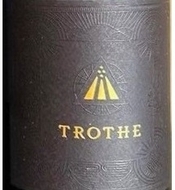 Like the other Trothe bottlings, their plummy Syrah is bold, delivering ripe, black fruit flavors spiced with a hint of black pepper. The velvety texture, which seems to be Trothe’s hallmark, makes the wine strikingly suave, yet with enough structure so it’s not flabby. … Read more
Like the other Trothe bottlings, their plummy Syrah is bold, delivering ripe, black fruit flavors spiced with a hint of black pepper. The velvety texture, which seems to be Trothe’s hallmark, makes the wine strikingly suave, yet with enough structure so it’s not flabby. … Read more
Trothe, Horse Heaven Hills (Washington) Cabernet Sauvignon 2021
($234): 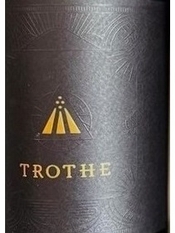 Weighing in at 14.5 percent stated alcohol, this massive Cabernet still maintains its identity with a panoply of black olive and other savory elements atop rich cassis-like flavors. Certainly big and bold, it nearly verves into the overdone lane, but manages to stay focused on its path. … Read more
Weighing in at 14.5 percent stated alcohol, this massive Cabernet still maintains its identity with a panoply of black olive and other savory elements atop rich cassis-like flavors. Certainly big and bold, it nearly verves into the overdone lane, but manages to stay focused on its path. … Read more
Duca di Salaparuta, Terre Siciliane IGT (Sicily, Italy) Vermentino “Sentiero del Vento” 2021
($17): 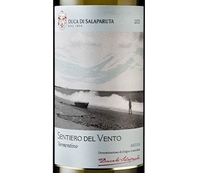 Duca di Salaparuta’s “Sentiero del Vento” is a fresh and breezy Vermentino perfect for cutting through August’s heat and humidity. The barest hint of bitterness in the finish of this mid-weight — not voluptuous — wine adds to its appeal. … Read more
Duca di Salaparuta’s “Sentiero del Vento” is a fresh and breezy Vermentino perfect for cutting through August’s heat and humidity. The barest hint of bitterness in the finish of this mid-weight — not voluptuous — wine adds to its appeal. … Read more
Pellegrino, Sicilia DOC (Sicily, Italy) Grillo “Gazzerotta Senaría” 2022
($26, Caput Mundi Wine Import): 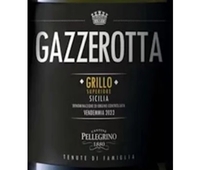 Pellegrino does a masterful job with this light weight Grillo, a white grape indigenous to Sicily. Saline-infused acidity enhances its clean and fresh profile, while a hint of white pepper in the finish amplifies its appeal. … Read more
Pellegrino does a masterful job with this light weight Grillo, a white grape indigenous to Sicily. Saline-infused acidity enhances its clean and fresh profile, while a hint of white pepper in the finish amplifies its appeal. … Read more
Domaine Barmès-Buecher, Alsace (France) Pinot Blanc “Rosenberg” 2022
($36, Petit Pois Corporation / Fleet Street Wine Merchants): 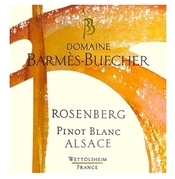 Pinot Blanc can often be light and innocuous. Not in the hands of Barmès-Buecher. Biodynamic since 2001, family owned and run Barmès-Buecher shows how captivating Pinot Blanc can be. Vibrant acidity balances and amplifies its density and pear-like nuances. … Read more
Pinot Blanc can often be light and innocuous. Not in the hands of Barmès-Buecher. Biodynamic since 2001, family owned and run Barmès-Buecher shows how captivating Pinot Blanc can be. Vibrant acidity balances and amplifies its density and pear-like nuances. … Read more
Domaine Ostertag, Alsace (France) Pinot Noir “Les Jardins” 2021
($42, Kermit Lynch Wine Merchant): 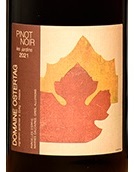 Pinot Noir is Alsace’s overlooked variety. It accounts for only about 12 percent of the region’s planting and much of it goes into Crémant d’Alsace Rosé, which must be made exclusively from that variety. So, it is not surprising there’s not a lot of it on retailers’ shelves. … Read more
Pinot Noir is Alsace’s overlooked variety. It accounts for only about 12 percent of the region’s planting and much of it goes into Crémant d’Alsace Rosé, which must be made exclusively from that variety. So, it is not surprising there’s not a lot of it on retailers’ shelves. … Read more
Tapiz, San Pablo, Uco Valley (Mendoza, Argentina) Malbec “Black Tears” 2019
($51, Vino del Sol): 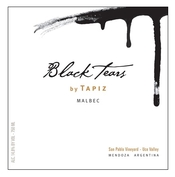 Jean Claude Berrouet, the former winemaker at Château Pétrus and other Moueix estates, consults at Tapiz, another Patricia Ortiz property. Berrouet’s hallmark style — subtlety and finesse — is clearly apparent in this stunning Malbec. It helps that they have selected special lots from a single vineyard located at over 4,440 feet above sea level. … Read more
Jean Claude Berrouet, the former winemaker at Château Pétrus and other Moueix estates, consults at Tapiz, another Patricia Ortiz property. Berrouet’s hallmark style — subtlety and finesse — is clearly apparent in this stunning Malbec. It helps that they have selected special lots from a single vineyard located at over 4,440 feet above sea level. … Read more
Tapiz, San Pablo, Uco Valley (Mendoza, Argentina) “Retrato Por Jean Claude” 2017
($100, Vino del Sol): 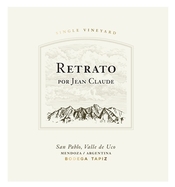 Sometimes just smelling a wine lets you know how great it will be. This is such a wine. Jean Claude Berrouet, who made over 40 vintages at Château Pétrus before retiring in 2007, consults at Tapiz, so it is not surprising that they would produce a Bordeaux blend alongside their marvelous Malbec. … Read more
Sometimes just smelling a wine lets you know how great it will be. This is such a wine. Jean Claude Berrouet, who made over 40 vintages at Château Pétrus before retiring in 2007, consults at Tapiz, so it is not surprising that they would produce a Bordeaux blend alongside their marvelous Malbec. … Read more
Zolo, Luján de Cuyo (Mendoza, Argentina) Cabernet Sauvignon Reserve, Estate Grown 2021
($23, Vino del Sol): 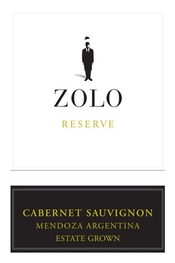 Patricia Ortiz, who owns Zolo, emphasizes the importance of estate grown fruit, which gives them complete control over planting, farming, and harvesting the grapes. In wry, understated manner, she adds, “When you must purchase grapes, it’s different.” … Read more
Patricia Ortiz, who owns Zolo, emphasizes the importance of estate grown fruit, which gives them complete control over planting, farming, and harvesting the grapes. In wry, understated manner, she adds, “When you must purchase grapes, it’s different.” … Read more
Hillick & Hobbs, Seneca Lake (Finger Lakes, New York) Dry Riesling Estate 2021
($35): 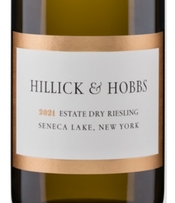 Paul Hobbs, one of the most prominent winemakers in the world, needs no introduction. His project in the Fingers Lakes is unique for him because he started it by establishing a vineyard instead of collaborating with growers as he has done elsewhere. … Read more
Paul Hobbs, one of the most prominent winemakers in the world, needs no introduction. His project in the Fingers Lakes is unique for him because he started it by establishing a vineyard instead of collaborating with growers as he has done elsewhere. … Read more
Jean-Baptiste Adam, Alsace (France) Riesling “Les Natures” 2021
($25, The Sorting Table): 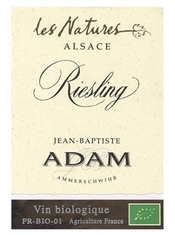 Consumers tell me they avoid Riesling because they don’t know if it will be sweet or dry. It is an understandable concern that mandates knowing the producer’s style or trusting a review. For those of you unfamiliar with Adam’s style, trust me, their riveting 2021 Les Natures cuts like a scalpel without a trace of sweetness. … Read more
Consumers tell me they avoid Riesling because they don’t know if it will be sweet or dry. It is an understandable concern that mandates knowing the producer’s style or trusting a review. For those of you unfamiliar with Adam’s style, trust me, their riveting 2021 Les Natures cuts like a scalpel without a trace of sweetness. … Read more
Domaine Zind-Humbrecht, Alsace (France) Muscat 2021
($29, Kobrand Wine & Spirits): 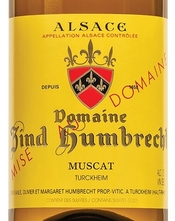 Although Domaine Zind-Humbrecht, one of Alsace’s great producers, was founded in 1959, the family traces its winemaking origins to 1620. Still family owned and run, they own about 100 acres, which they farm organically and biodynamically. … Read more
Although Domaine Zind-Humbrecht, one of Alsace’s great producers, was founded in 1959, the family traces its winemaking origins to 1620. Still family owned and run, they own about 100 acres, which they farm organically and biodynamically. … Read more
Wapisa, Rio Negro, Patagonia (Argentina) Malbec 2021
($25, Vino del Sol): 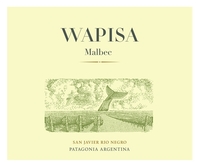 Wapisa shows its consistency with this fresh and lively Malbec. Fabian Valenzuela, the winemaker, has resisted the temptation to make what has become all too common — a muscular, in-your-face Malbec. Instead, this one leads with great aromatics and follows by combining a pepper-like spice with mid-weight black fruit flavors. … Read more
Wapisa shows its consistency with this fresh and lively Malbec. Fabian Valenzuela, the winemaker, has resisted the temptation to make what has become all too common — a muscular, in-your-face Malbec. Instead, this one leads with great aromatics and follows by combining a pepper-like spice with mid-weight black fruit flavors. … Read more
Wapisa, Rio Negro, Patagonia (Argentina) Pinot Noir 2022
($25, Vino del Sol): Wapisa, located only about 25 miles from the Atlantic Ocean and Patagonia’s only coastal winer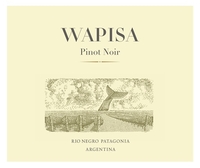 y, is the indigenous Patagonian name for whale. Owned by Patricia Ortiz, one of Argentina’s leading winemakers, it makes a splendid array of wines. … Read more
y, is the indigenous Patagonian name for whale. Owned by Patricia Ortiz, one of Argentina’s leading winemakers, it makes a splendid array of wines. … Read more
Crosby Roamann, Napa Valley (California) Sauvignon Blanc 2022
($85): 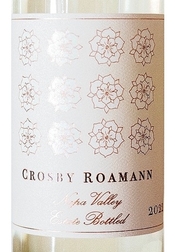 I would like to know more about Crosby Roamann, a Napa Valley winery I am unfamiliar with, because this wine is stunning. Sadly, I could not penetrate their website because a pop-up announcing their newsletter required an email address, which I was not inclined to leave, before proceeding. … Read more
I would like to know more about Crosby Roamann, a Napa Valley winery I am unfamiliar with, because this wine is stunning. Sadly, I could not penetrate their website because a pop-up announcing their newsletter required an email address, which I was not inclined to leave, before proceeding. … Read more
Domaine La Florane, Côtes du Rhône-Villages Saint Maurice (Rhône Valley, France) “Echevin” 2021
($21): 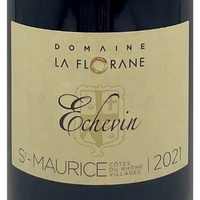 The Rhône Valley provides a treasure trove of reasonably priced reds and whites, especially from the appellations with a lesser pedigree compared to the famed ones, such as Châteauneuf-du-Pape or Hermitage. There is a trio of appellations, Côte du Rhône, Côtes du Rhone-Villages, and Côtes du Rhône-Villages with a named village appended, such as Saint Maurice, that offer particularly good value. … Read more
The Rhône Valley provides a treasure trove of reasonably priced reds and whites, especially from the appellations with a lesser pedigree compared to the famed ones, such as Châteauneuf-du-Pape or Hermitage. There is a trio of appellations, Côte du Rhône, Côtes du Rhone-Villages, and Côtes du Rhône-Villages with a named village appended, such as Saint Maurice, that offer particularly good value. … Read more
Domaine Servin, Chablis Premier Cru (Burgundy, France) Butteaux 2022
($32): 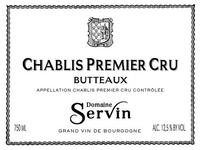 For hockey aficionados, this wine is a hat trick: Great producer, great vintage, great price. For non-hockey fans, just buy this wine. Some of it is in my cellar. You’ll smile. Domaine Servin, one of Chablis’ top producers, succeeded admirably with their 2022s, which is not surprising given the stature of the vintage. … Read more
For hockey aficionados, this wine is a hat trick: Great producer, great vintage, great price. For non-hockey fans, just buy this wine. Some of it is in my cellar. You’ll smile. Domaine Servin, one of Chablis’ top producers, succeeded admirably with their 2022s, which is not surprising given the stature of the vintage. … Read more
Maison Louis Latour, Bourgogne Aligoté (Burgundy, France) 2022
($22): 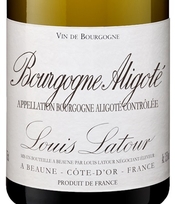 The appellation, Bourgogne Aligoté, is an anomaly in Bourgogne, the epicenter of terroir-based viticulture, because it is named for the grape, not the site. The grapes for Bourgogne Aligoté can come from anywhere in Bourgogne, from the Côte Auxerrois in the north near Chablis to Mâcon in the south. … Read more
The appellation, Bourgogne Aligoté, is an anomaly in Bourgogne, the epicenter of terroir-based viticulture, because it is named for the grape, not the site. The grapes for Bourgogne Aligoté can come from anywhere in Bourgogne, from the Côte Auxerrois in the north near Chablis to Mâcon in the south. … Read more
Tongue Dancer, Russian River Valley (Sonoma County, California) Chardonnay 2021
($55): 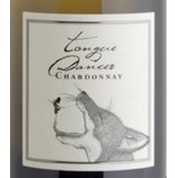 Tongue Dancer makes a range of Chardonnays (and Pinot Noirs) highlighting the uniqueness of the vineyards from which they source the grapes. This one, in contrast, is a blend of several vineyards from throughout the Russian River Valley. It is an opulent Chardonnay with all the richness you would expect from grapes grown in the Russian River Valley. … Read more
Tongue Dancer makes a range of Chardonnays (and Pinot Noirs) highlighting the uniqueness of the vineyards from which they source the grapes. This one, in contrast, is a blend of several vineyards from throughout the Russian River Valley. It is an opulent Chardonnay with all the richness you would expect from grapes grown in the Russian River Valley. … Read more
Tongue Dancer, Russian River Valley (Sonoma County, California) Chardonnay Bacigalupi Vineyard 2021
($50):  Choosing between Tongue Dancer’s Bacigalupi and the Pratt Vineyard bottlings is like choosing between your children. To be sure, the wines are different despite similar winemaking philosophy, which shows that terroir influence (i.e., where the grapes grow has an impact) is alive and well in California. … Read more
Choosing between Tongue Dancer’s Bacigalupi and the Pratt Vineyard bottlings is like choosing between your children. To be sure, the wines are different despite similar winemaking philosophy, which shows that terroir influence (i.e., where the grapes grow has an impact) is alive and well in California. … Read more
Tongue Dancer, Russian River Valley (Sonoma County, California) Chardonnay Pratt Vineyard, Irwin Lane 2021
($59):  Wow! Here in the 2021 Pratt Vineyard Chardonnay the winemaking team at Tongue Dancer has combined opulence with finesse. Freshness in the finish serves to amplify the wine’s considerable charm. A delectable hint of bitterness in the finish reinforces its stature and complexity. … Read more
Wow! Here in the 2021 Pratt Vineyard Chardonnay the winemaking team at Tongue Dancer has combined opulence with finesse. Freshness in the finish serves to amplify the wine’s considerable charm. A delectable hint of bitterness in the finish reinforces its stature and complexity. … Read more
Wither Hills Winery, Marlborough (South Island, New Zealand) Sauvignon Blanc 2023
($15, Distinguished Vineyards & Wine Partners):  Here is an example of why New Zealand — specifically Marlborough — Sauvignon Blanc has captured the world’s attention. It delivers a delightfully cutting and invigorating lime-like edginess that cuts through any flavor on the plate, as well as the heat and humidity of summer. … Read more
Here is an example of why New Zealand — specifically Marlborough — Sauvignon Blanc has captured the world’s attention. It delivers a delightfully cutting and invigorating lime-like edginess that cuts through any flavor on the plate, as well as the heat and humidity of summer. … Read more
Maset des Montagnes, Côtes du Roussillon (Languedoc-Roussillon, France) Grenache – Macabeu “Terroirs D’Altitude” 2022
($23, Albert Bichot USA): 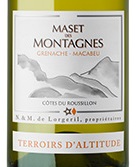 With this wine, Maset des Montagnes, one of the estates under the umbrella of Domaines N & M de Lorgeril, shows that refreshing whites can come from the sun baked south of France. This 50/50 blend of Grenache Blanc and Macabeu delivers an enlivening combination of delicate stone fruitiness and spice all supported by a firm spine of acidity. … Read more
With this wine, Maset des Montagnes, one of the estates under the umbrella of Domaines N & M de Lorgeril, shows that refreshing whites can come from the sun baked south of France. This 50/50 blend of Grenache Blanc and Macabeu delivers an enlivening combination of delicate stone fruitiness and spice all supported by a firm spine of acidity. … Read more
Maison Albert Bichot, Petit Chablis (Burgundy, France) 2022
($26, Albert Bichot USA):  In my mind, Petit Chablis is a misnomer because “petit” somehow diminishes the wine. Petit Chablis comes from Chardonnay planted in a different kind of limestone compared to those labeled Chablis, imparting more fruitiness and less minerality. … Read more
In my mind, Petit Chablis is a misnomer because “petit” somehow diminishes the wine. Petit Chablis comes from Chardonnay planted in a different kind of limestone compared to those labeled Chablis, imparting more fruitiness and less minerality. … Read more
Bells Up Winery, Chehalem Mountains (Willamette Valley, Oregon) Pinot Noir “Maestro” Estate Reserve 2021
($56): 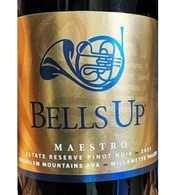 The delicate, 13.3 percent stated alcohol, Maestro, named to honor John Williams, combines the pure, red fruit of the winery’s Titan bottling with a mild touch of minerals seen in the Candide offering. It displays the same purity and verve as the other Bells Up Pinot Noirs. … Read more
The delicate, 13.3 percent stated alcohol, Maestro, named to honor John Williams, combines the pure, red fruit of the winery’s Titan bottling with a mild touch of minerals seen in the Candide offering. It displays the same purity and verve as the other Bells Up Pinot Noirs. … Read more
